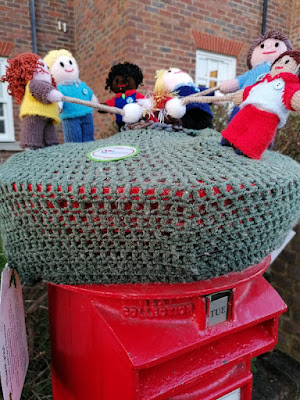Duxford with Dan and Krisie
Imperial War Museum at Duxford with Dan and Krisie. The night before I played them the bit in the Battle of Britain film where the airfield is bombed and a hanger takes a direct hit. This was before CGI, and the filmmakers actually blew up the hanger.
It was a glorious day and as we drove close we could see planes in the sky. Although it wasn't a flying display day there were many historic aircraft flying.
We sat in the sun having our lunch with an uninterrupted view of planes taking off and landing. One was practising loop-the-loops, and flying up vertically then falling down before roaring off as it got close to the ground.
We watched this Hurricane land.
This Spitfire flew in the Battle of Britain film, and in January 2022 the Daily Telegraph wrote this about it
A vintage Spitfire that fought in the Second World War and starred in the classic film The Battle of Britain is on sale for a record £4.5 million.
The plane has an extraordinarily high number of original components, a “continuous history” and remains airworthy, all of which contribute to its high value.
Some 82 years after they played a key role in its finest hour, up to 70 Spitfires are still airworthy and able to grace the skies above Britain. Few, however, can claim to be as complete and original as the 1943 Supermarine Spitfire Mark LF IXb – MH415.
The Aircraft Sales Company, which is selling MH415 having restored the plane, claims that 90 per cent of its components were those originally fitted at the factory in Castle Bromwich, Solihull, in 1943.
That includes the interior of the cockpit, which is still in its Second World War specification, including the pilot seat, throttle, control column as well as the gunsight and trigger.
Most surviving Spitfires have undergone multiple restorations, often using cannibalised or new parts to replace those damaged during combat or lost from ageing.
Many “new” Spitfires are recovered wrecks with barely any remaining parts that are heavily restored and assume the identity of the crashed aircraft.
The parts of the MH415, however, can almost all be traced back to Castle Bromwich and August 1943.
Four wing spars, which were usually replaced during regular maintenance, are the only major part not to be original.
MH415’s combination of traceable original parts, confirmed combat history and post-war fame all combined to give it its unique value, said Andrew Durston of the Aircraft Sales Company.
“This is the real deal and has endured all the way through,” he told The Telegraph, “it is extremely rare. To actually sit in a piece of history that is that significant, it really is quite emotional, actually. With all your senses, you can just feel the aura that's come with it.”
Of the 70 or so flying Spitfires, perhaps only two others compare to MH415, he said. Its sister aircraft, MH434 and the Silver Spitfire, which recently circumnavigated the globe.
Not only is the aircraft in excellent, flightworthy condition, but it also has a significant combat record.
In August and September 1943, it was flown on 27 missions by Sqn Ldr Henri Gonay, a Belgian who had evacuated to England after the Fall of France and died nine months later, shortly after D-Day.
On 24 September 1943, while being piloted by F/O Desmond F. Ruchwaldy, MH415 claimed an Fw-190 destroyed north-west of Amiens while on a bomber escort mission, a role it continued in for much of 1944.
After the war, MH145 served in Java, then in the Dutch East Indies, before returning to Europe and starring in the hit 1960s films The Longest Day and The Battle of Britain.
We left Duxford as it closed and had dinner at King William IV with Joan.






Comments
Post a Comment